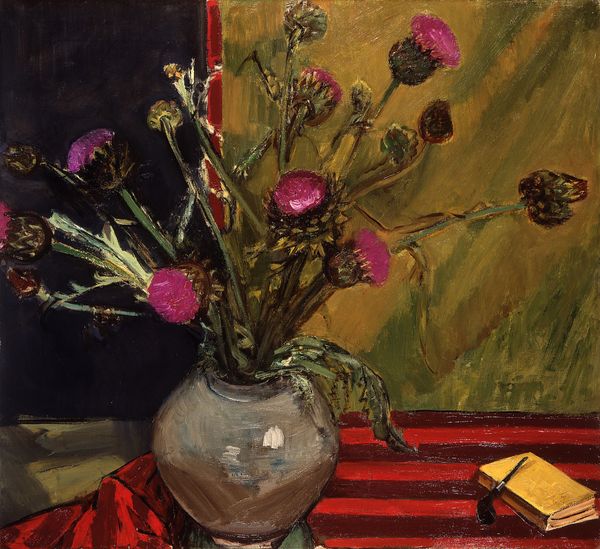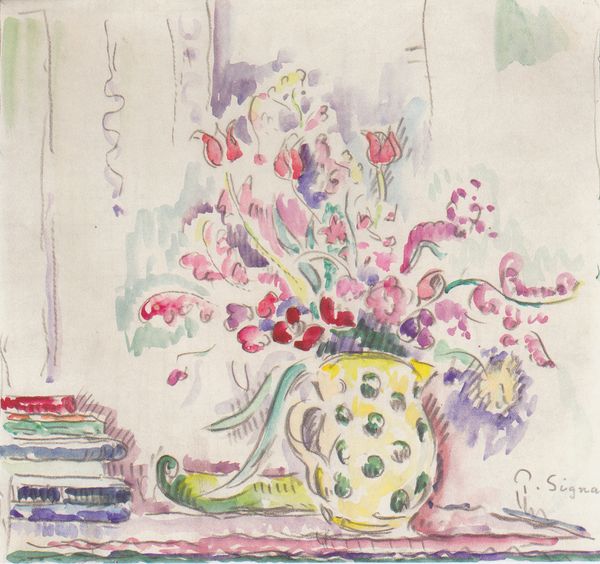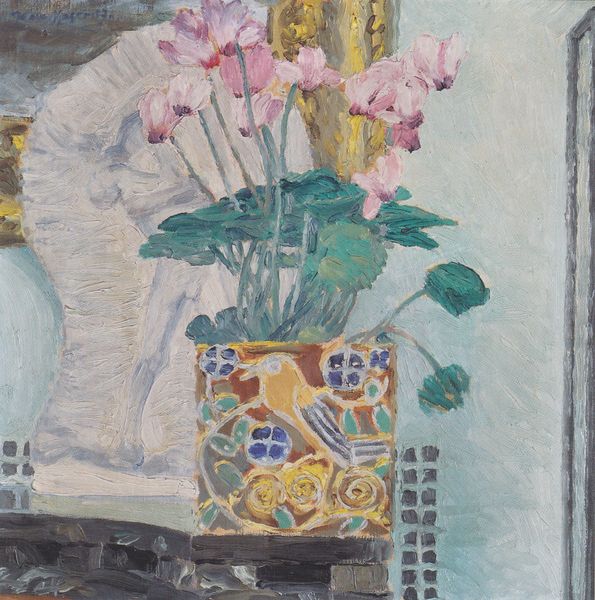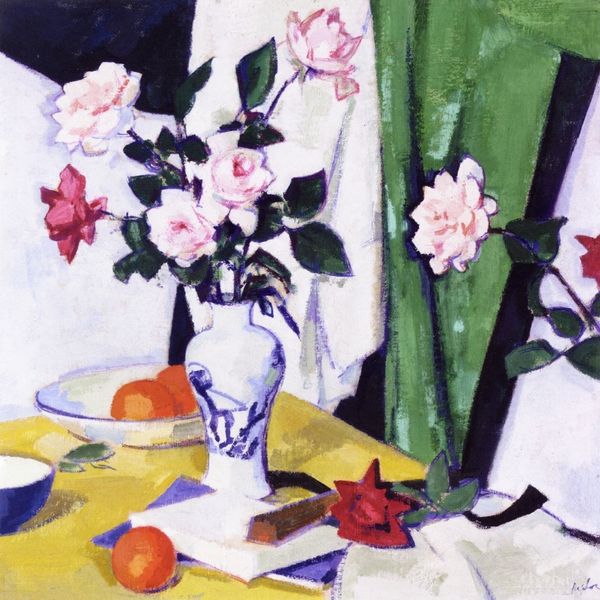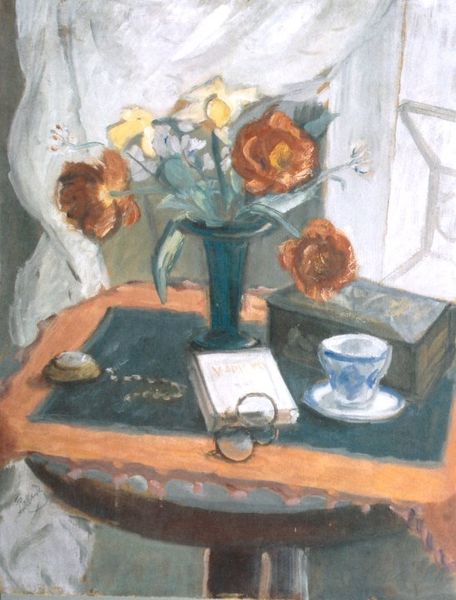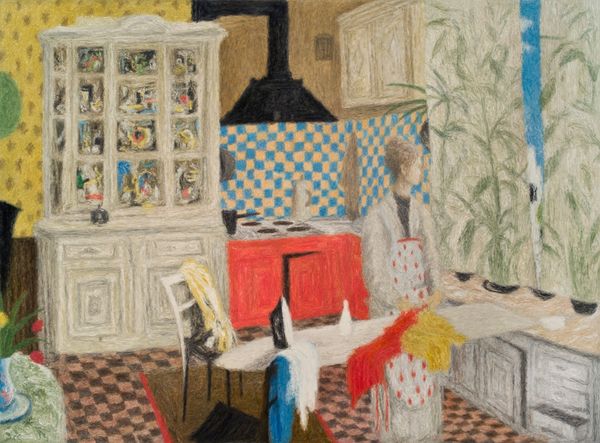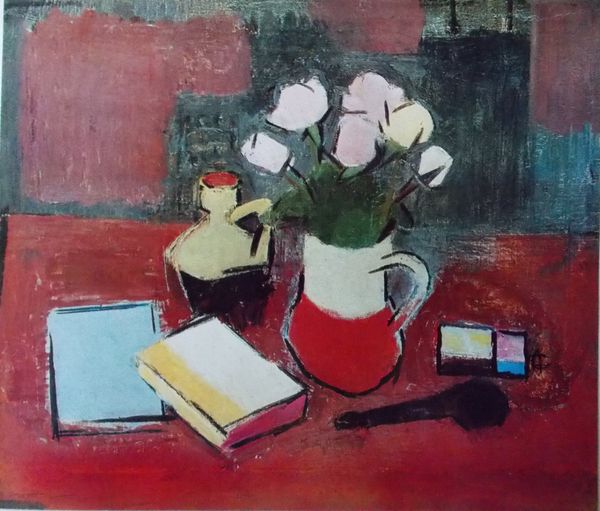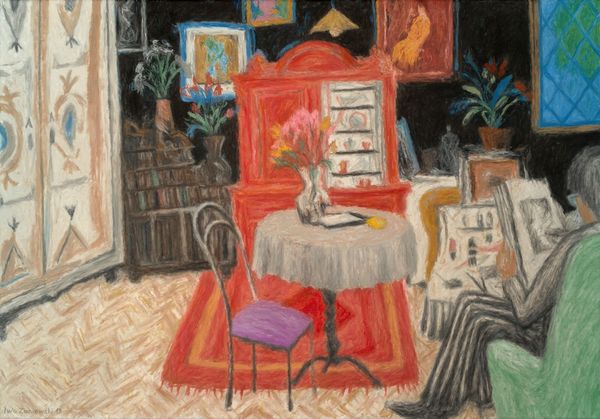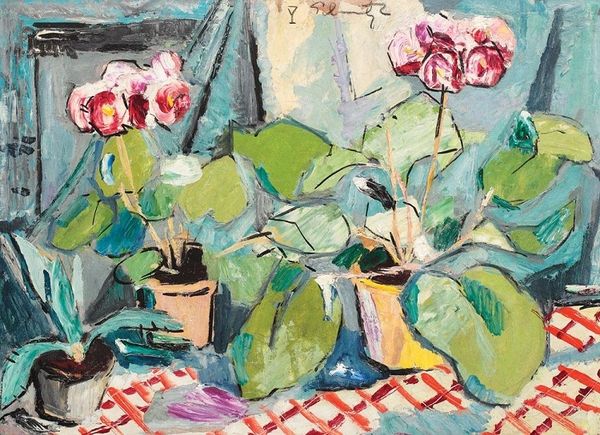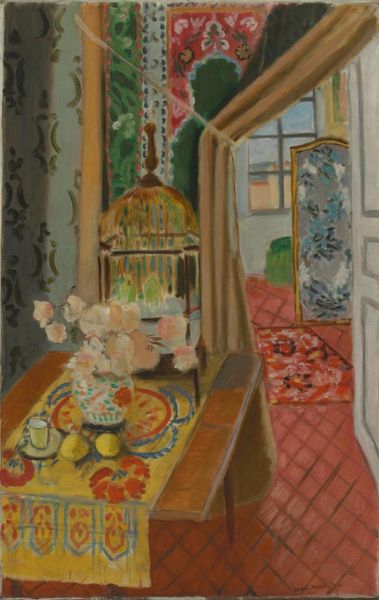
Copyright: Public domain US
Curator: Henri Matisse painted "Still Life, Bouquet of Dahlias and White Book" in 1923. It's a vibrant oil on canvas. What's your first take on this scene? Editor: It feels so domestic, but in a staged way. Almost claustrophobic. The flattened perspective and repeating floral patterns of the wallpaper make it seem like the objects on the table are part of a tableau, rather than an observed reality. Curator: Precisely. Matisse's Intimist leaning allowed him to really play with domestic space as a site for experimentation with colour and form, drawing the viewer in to question our assumptions about ordinary objects. It’s interesting to look at the book, a “white book,” sitting in what should be an open space, available to receive new ideas. Editor: The positioning of the open book in the immediate foreground reads like an invitation, doesn’t it? It makes you wonder what stories it could tell or what insights it might offer if only we could lean in and read the words on its pages. There is a challenge of sorts to see, understand, know... Curator: A challenge for sure, but also an act of defiance, considering the socio-political milieu, post World War I. Editor: Yes, thinking about it in the broader context of post-war anxiety, that flat perspective could also be interpreted as representing the loss of depth and dimension following such a destructive event in European history, it definitely invites conversations around social fragility and recuperation of the self through aesthetics. Curator: I think it can be helpful to view Matisse’s fauvist years not merely as aesthetically-driven explorations but also, through his colour choices and arrangements, as expressions of an attitude to a society reconstructing after great and unprecedented political upheaval. Editor: Agreed. It's not just a pretty picture, then, but a complex statement on existence. Curator: Exactly, far from being superficial, its playful distortions challenge perceptions and propose alternative visual arrangements. Editor: I'll definitely think of Matisse differently from now on. It’s not just about capturing beauty; it’s also about a resistance, through art and life, in a society marred by the War.
Comments
No comments
Be the first to comment and join the conversation on the ultimate creative platform.

